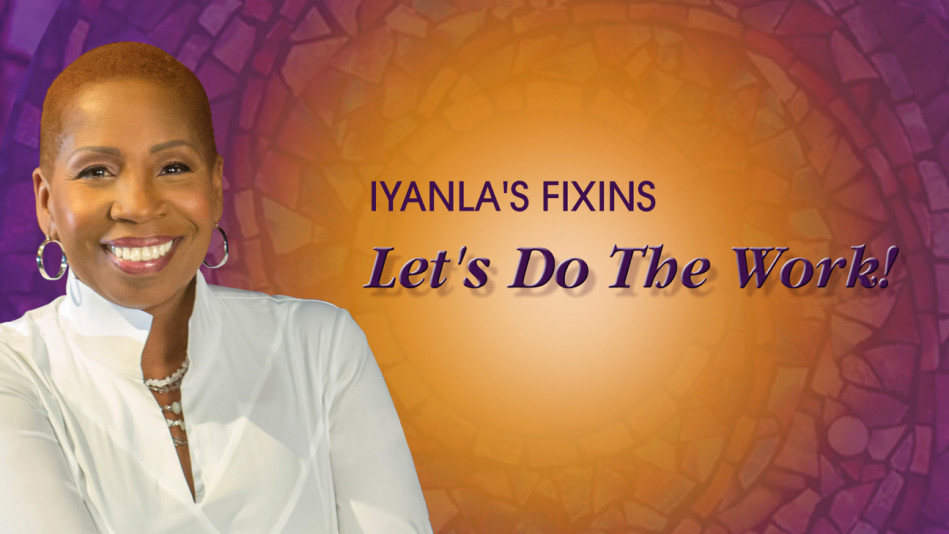
Iyanla's Fixins: Let's Do the Work!
I first want to thank you for viewing and supporting the new season of Iyanla: Fix My Life. As we promised at the beginning of Season 1, our intention is to create and present illuminating television programming that brings healing and positive energy to the hearts and minds of the guests and viewers. This season, with the House of Healing, we hope to provide you, the viewers, with an opportunity to participate in the healing process. Like the guests on the show, we want to support you in recognizing and acknowledging what you do, how you do it and why you do it. At the same time, we are offering you the information and tools required to make different, more self-supportive and self-honoring choices. This season, more than any other, we are excited about our alignment with our initial intentions.
We begin the season with a four-part series entitled "House of Healing: The Myth of the Angry Black Woman." The study guide below is offered to support you in doing your work to dismantle the myth.
MYTH
- A traditional story, especially one concerning the early history of a people or explaining some natural or social phenomenon
- A widely held but false belief or idea
INTENTION
It is our intention to demonstrate through the guests and their stories how unaddressed childhood wounds and issues can result in inappropriate behavior.
It is our intention to examine and explore common issues and experiences among black women that may manifest as inappropriate behavior, which is often mislabeled as anger.
Hurt is often masked and concealed as anger.
It is our intention to dispel the misperceptions and address the underlying issues often associated with black women and their behavior that becomes their perceived identity, often resulting in the label of "angry black women."
DOING YOUR WORK
We encourage you to keep pens and paper handy so that you can take accurate notes. As you watch the show, we ask that you:
- Identify the guest or guests in the House of Healing with whom you can most identify. If you do not see yourself, try to identify someone you know.
- What is it about the guest that you recognize within yourself or about someone you know?
- Identify what you think and feel about what you believe the guest is demonstrating, and why.
- For each House of Healing guest, particularly the guest you identify with, write down what you would consider to be three of their toxic or negative traits. Write these down because you will need them for the future episodes.
DURING COMMERICIAL BREAKS
Get in touch with your feelings about what you have seen and heard expressed by the guests. Be sure to write these down.
- Are you aware of any stereotypes you see?
- Are you aware of any judgments (right, wrong, good, bad, name-calling, making assumptions) that surface in your mind?
- Identify the strongest emotions that have come up for you at the end of each segment of the show (i.e. Seeing this, I feel…?).
AT THE END OF THE SHOW
We encourage you to remember that healing is a process. Most healing begins with a flare-up of the disease or disruptive patterns. This is a four-part series through which you will have the opportunity to participate in the unfolding of the healing—your own and that of the guests. At the end of each episode consider the following:
- What did you find most troubling about the House of Healing guests in this episode?
Why were you troubled by this?
How did it make you feel?
How do you or someone you know engage in this behavior?
What judgments (right, wrong, good, bad, name-calling, making assumptions) have you made about the guest(s)?
Are you aware of thinking or feeling this way (having the judgment) about yourself or someone else?- During the show, each of the women was asked to pick a label to wear describing their experience of anger. If you were to choose one of those labels for yourself, which would you choose?
a. Write down the label that best describes your experience.
- As you move through the week between episodes, use your journal or some other method to stay mindful of the following:
a. What triggers the feelings on your label?
b. Who triggers the feelings on your label?
c. When you are triggered, what do you remember? In other words, what is your earliest memory of feeling this way?
d. What is your first response when the feelings on your label are triggered?
e. What is your nastiest response when this feeling is triggered within you?
We hope that this study guide supports you in gaining a deeper understanding of what we have presented. Of course, you are free to use this guide or any other process to be more than just a viewer. We encourage you to be a participant, to look for and embrace the lessons you need as well as those you can pass on. We also encourage you to share your comments on Facebook, Oprah.com and Twitter.











